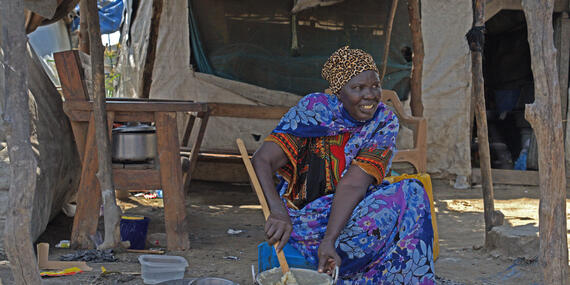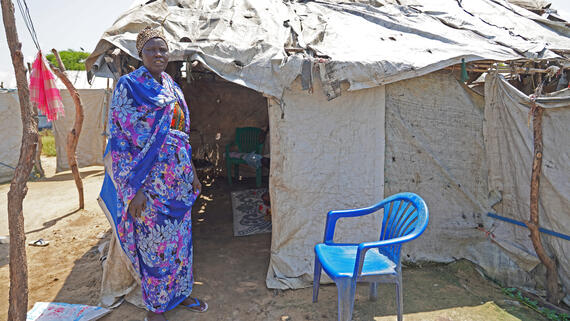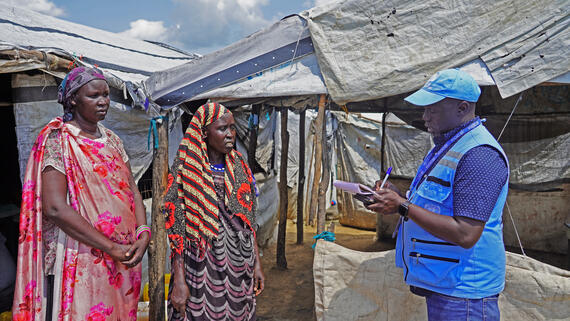The human cost of funding shortfalls

Elizabeth Joseph, 47, has endured immense suffering for years. The displaced mother of seven lives in a camp due to the clashes in South Sudan, but she struggles to provide for herself and her children, as food, water and other essential supplies are scarce.
“People are tired here,” she said. “No assistance is being delivered and humanitarian aid stopped almost a year ago. Medicine and health services are not available. Amid this situation, we don’t know what to do. Children don’t get enough food; they might steal or beg to survive.”
Elizabeth is just one of 2,300 people struggling to survive in the Bor internal displacement camp site in Jonglei State. For 10 years she has tried to care for her children in increasingly dire conditions with dwindling resources.
The camp opened in 2013, but according to OCHA Humanitarian Affairs Officer Richard Luguma, the situation is now dire.
“Humanitarian partners, together with the Government, are now looking into an option to relocate the people in this camp to a permanent place,” he said.

Food Security Analyst Muzzamil Nour warns that without funding, the general food distribution for severely food-insecure people will end in less than two months in all locations in South Sudan.
“There will be no resources to respond to ad hoc emergencies, such as floods and new displacements,” he explained. “Most of all, lack of funding will jeopardize the plan to sustain emergency food production.”
Elizabeth's story reflects the plight of millions of people in other crisis-affected countries. Conflict, violence and climate shocks are the main drivers of these crises, displacing millions of people, and destroying lives and livelihoods. But due to funding shortfalls, humanitarian partners can no longer meet people’s most acute needs. The Global Humanitarian Overview – the annual funding appeal produced by OCHA on behalf of the humanitarian community – is seeking US$48.7 billion to help 188 million people across 72 countries. However, by the end of June only 19 per cent of that amount had been received, and only 27 per cent of the people the UN aimed to help received assistance.

This lack of funding, combined with impediments to aid delivery, is forcing the UN and its partners to make difficult decisions about who receives aid. For example, partners reduced or halted assistance to people facing crisis levels of acute food insecurity to focus on those facing emergency, catastrophic or famine levels of hunger. This approach is necessary, but it leaves many vulnerable people at risk of slipping further into crisis.
In Burkina Faso and Yemen, families are grappling with severe food shortages as humanitarian aid dwindles. Women’s and girls’ access to sexual and reproductive health care and services for gender-based violence is severely compromised in multiple crises. And education is suffering, with children in countries such as Mali, the Occupied Palestinian Territory, Sudan and Syria deprived of their future due to education funding shortfalls.
These examples represent just a fraction of the widespread impact of funding shortages on vulnerable populations worldwide.
Nevertheless, humanitarian workers continue to rally to help people most in need. In the first six months of this year they reached at least 43 million people with some form of assistance. But there is only so much humanitarians can do. More funding and better access remain critical to ensure no one is left behind in the global humanitarian response.
